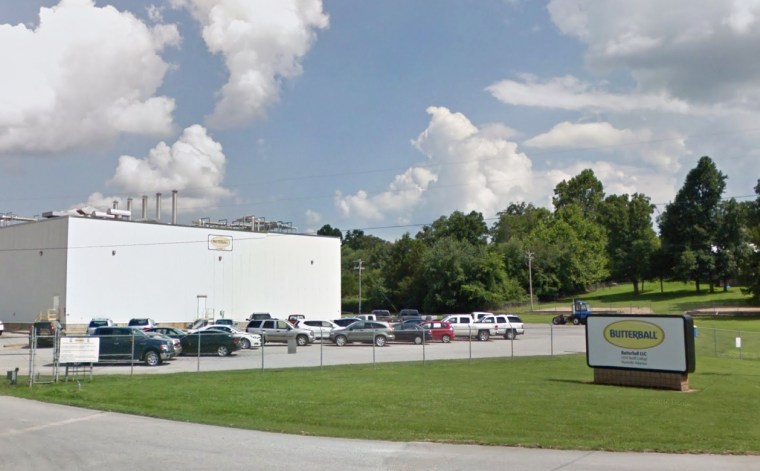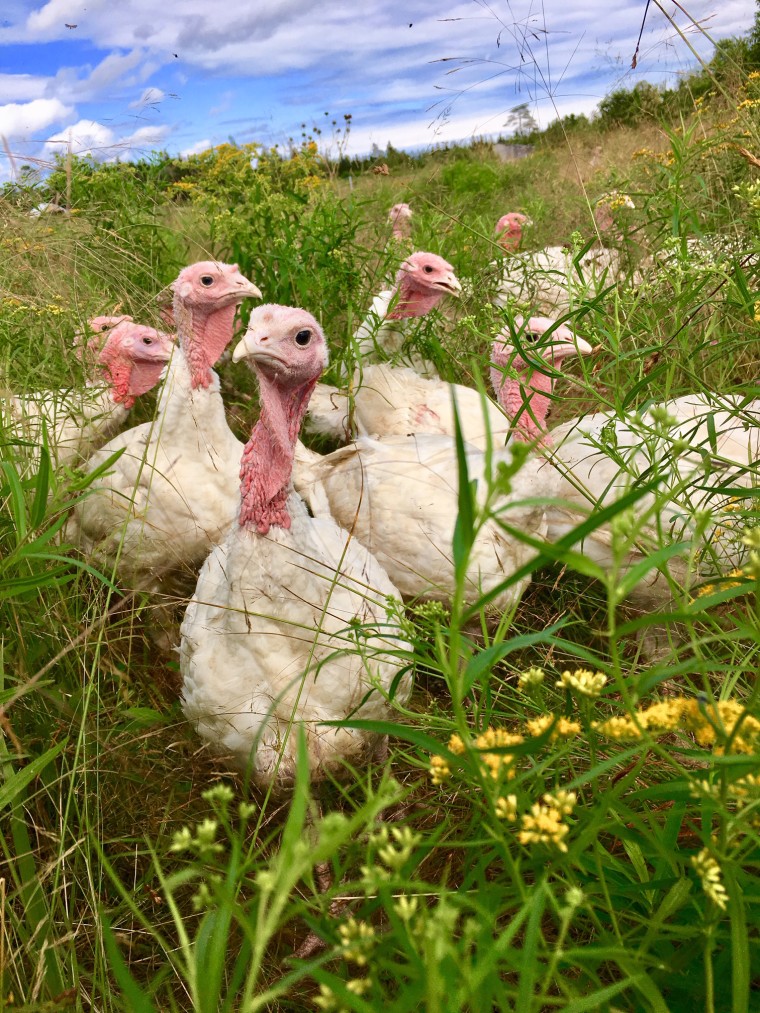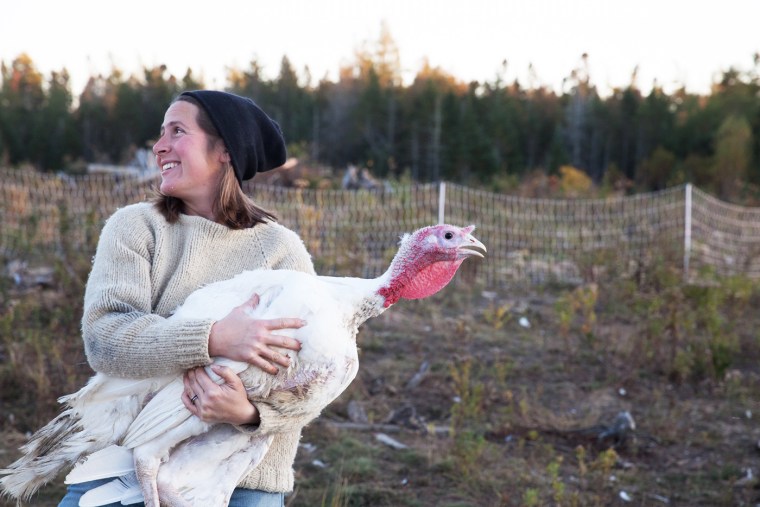Thanksgiving is all about tradition, but this year tradition looks a little different for turkey farmers.
Over 70 percent of households plan on a Thanksgiving with fewer than six people, according to a Nielsen survey, up from about 50 percent last year.
And about 75 percent of households will be serving the same size or larger turkeys this year, according to a survey by Butterball, the largest U.S. turkey producer, while some of the remaining households will be planning for smaller birds.
For producers big and small, that has meant adjustments to how the turkeys are both grown and processed to have fresh and frozen birds ready for the busy holiday season.
In June, Aaron Bell, an eighth-generation farmer running Tide Mill Organic Farm in Edmunds, Maine, made the call to start his pasture-raised turkey poults a few weeks later than usual, aiming to grow mainly 15-pound birds instead of the usual 20-pounders. Turkeys take about 16 weeks for hens and 19 for toms, so producers had to decide in the middle of the summer's uncertainty what to do about Thanksgiving.
"We could tell from the way everything was going that this [pandemic] wasn't going to be over any time soon," Bell said. "Figured it's a good time to make a small change if you can."
Bell's self-described "micro farm" processes about 1,000 whole birds for Thanksgiving, selling to local co-ops and distributors, as well as directly to customers, who sometimes pop coolers in the backs of pickups truck and drive three hours to get fresh birds.
Bell said walk-up business tripled this summer as consumers, avoiding supermarket shortages and crowds, increasingly sought out fresh, local options with less processing.
Although his turkeys make a big difference to his happy and loyal customers, his operation is but a drop in the gravy boat. Turkey production is fairly common in counties across the U.S. but is concentrated in a few states like Minnesota, North Carolina and Indiana. Over 46 million turkeys are eaten at Thanksgiving, the National Turkey Federation estimates, mostly from large-scale integrators, which pay farmers to raise birds for them on contract.
COVID-19 outbreaks this spring and summer at traditionally densely staffed meat and poultry processing plants, including a small turkey processing plant in Indiana, have forced larger companies to slow production and implement new safety measures.
Butterball, which says it produces 30 percent of the turkeys eaten at Thanksgiving, nearly 14 million, "slowed production periodically over the course of the pandemic," spokeswoman Rebecca Welch said in an email, reducing line speed to have fewer workers on the line and to keep them safe.
"Currently all of our facilities are operating normally, and we prepared long in advance to meet our retailers' and consumers' needs," she wrote.
But "it's been a logistical nightmare" for the large-scale integrators, which include Butterball, Foster Farms, Hormel and Perdue Farms, to change up processes during the pandemic, said Michael Lilburn, an animal sciences professor at Ohio State University.

"You always have the option of bringing in birds earlier and processing earlier if they think there is a market there," he said. "You still need labor to process them."
Operators in the turkey supply chain say their usual labor tightness got even worse this summer, with workers sheltering in place or reducing the number of days they were willing to work as they balanced health and economic concerns.
"Our single biggest issue is labor. We cannot get the labor," said John King, president of the Virginia Poultry Growers Cooperative. "The first direct impact was when the unemployment stimulus passed. We literally had workers choosing to take unemployment rather than take the job.
"These aren't minimum-wage jobs, either, and have attractive benefits," he said. Even adding new bonuses for attendance and safety couldn't entice enough workers back.
Smaller farms also had to implement safety measures and manage shortages of experienced workers. In other areas, they were less constrained and had advantages.
"Our work is almost completely outside," said Jamie Ager, co-owner of Hickory Nut Gap Farm in Fairview, North Carolina. "We don't have inside safety precautions that we had to invest in. We're pretty low tech, electric fences and big houses."
During the summer, the farm crew was able to operate as a pod — but during processing time indoors, when it takes in more outside help, social distancing and masks are required, Ager said. His farm is processing about 400 birds this year, the same as last year, but he said it took a few more weeks to sell out than usual, in part because of greater uncertainty about the size and scope of Thanksgiving celebrations.
Some customers are looking even further afield and plan to put leftover turkey in the freezer for later on, "just in case of shortages or a need to isolate," Scott Greaney, an independent turkey farmer, said in an email. "People are really thinking ahead and preparing, just like the old days."

Some customers have been opting for large chickens instead of the usual entrée. But for the most part, if it's Thanksgiving, there's a turkey on the table, even if fewer people are around it.
"It's a grand-looking bird. ... When roasted and sitting in the pan and the skin is all brown and crispy on the outside, it just looks delicious," Bell said. "It's just a tradition that's been a long time in the making, and it's not going anywhere."
Despite distance and the pandemic disruptions, there are still ways to connect with family, even if only virtually.
Download the NBC News app for breaking news and politics
"This year will be a small home Thanksgiving with just us and the kids," John Kinnear, a marketing director and father of two in Salt Lake City, said in an online message. "We're setting up laptops at the table and sending a Zoom link out to our family and friends for drop-ins."
As for the turkey, he swapped his usual organic turkey from Costco, which seemed too large, for a smaller frozen Butterball to "brine, smoke and then finish in the oven," Kinnear told NBC News. "But it's still going to be more than we can eat," he said.
"Bummed we won't see family, but not upset about extra leftovers," he said.


